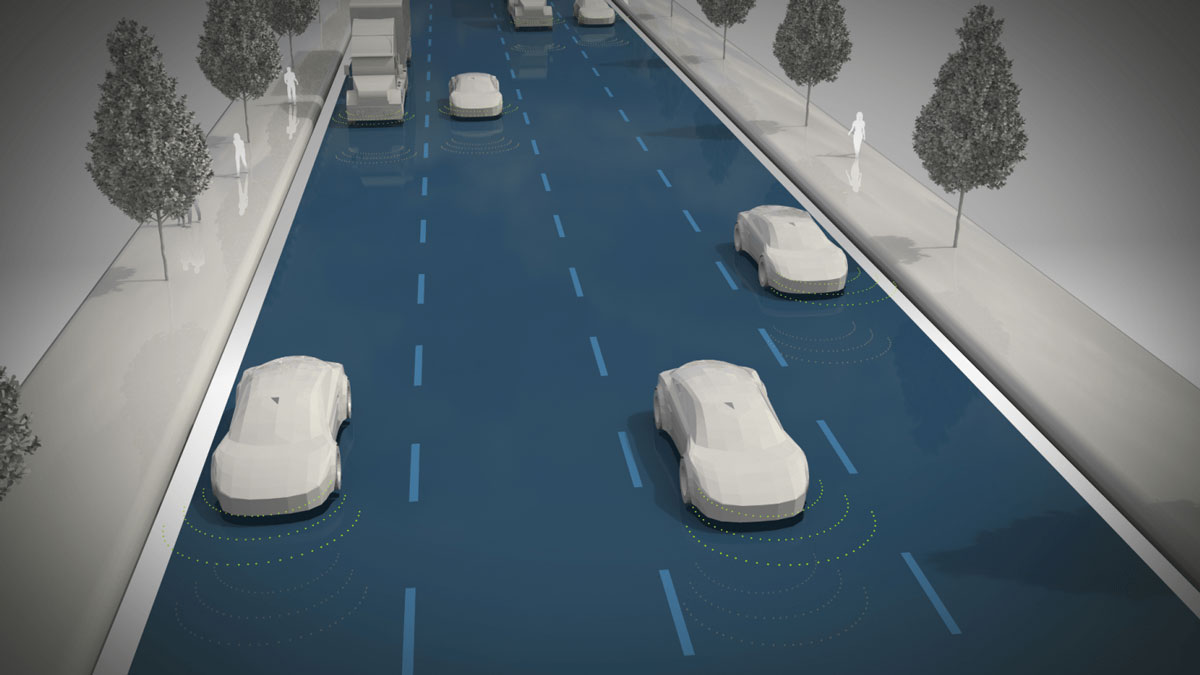Satellite imagery of Earth has proved a transformative resource for a near half-century now. Researchers, government bodies, and entrepreneurial change agents have used it for applications that have already altered many of the most essential among human endeavors, including agriculture, regional planning, biodiversity conservation, military surveillance, and cartography and navigation. Once the U.S. government initiated the Landsat program in the early 1970s, satellite imagery began to revolutionize the way we understand and interact with the world around us.
As of a bit more recently, satellite imagery also permanently changed the way we drive.
And that’s about to happen again.
Every centimeter counts
Several technologies must evolve and interact for self-driving cars to begin meeting our transportation needs in real-time — including satellite imagery and mapping that’s far more sophisticated than what’s currently used to populate a GPS navigation app. Google Maps, for example, can work from satellite images captured at 50 cm resolution. (This means that each pixel represents an area of 50 square centimeters, or almost 20 square inches, of the ground below — and any object smaller than that will blend with the surrounding area to create a solid square pixel.)
Images at 50 cm resolution provide more than enough information to assist a human driver with eyes on the road and hands on the wheel, but they’re still nowhere near specific enough to assist a completely autonomous robot driver.

The race to bring self-driving cars to market is measured in much finer increments. Innovators in high-definition mapping, like DeepMap (a Palo Alto based firm that’s currently working with 8 of the globe’s leading automakers), insist that centimeter-level mapping precision is critical to achieve the safety this new autonomous era will require. Much of the $16 billion that’s alleged to have already been invested in the development of self-driving vehicles has gone toward the imaging technology, software development, mapping platforms, miniature satellites, and rocket launches that will eventually make this a reality.
Community-centric use cases coming soon(ish)
Early forecasters may have jumped the gun on when self-driving vehicles would enter the mass-produced marketplace. But the research and development behind the autonomous automotive movement, if more costly and time-consuming than initially anticipated, is beginning to round a corner. Community-centric use cases, specifically rideshare systems, are likely closest to completion, as cost per vehicle mile for autonomous vehicles will decrease much faster in these scenarios versus private ownership.
Megan Prichard, Global Head of Autonomous Driving for Ford Motor Company, recently spoke about the electric, autonomous, and even flying vehicles to come on an episode of The Breakthrough, TheoremOne’s new podcast hosted by VP of Operations Alison Dean.
She expects self-driving to ramp up as a shared resource first, once cost per vehicle mile drops below $1. “We see that happening in the next basically 10, 15, 20 years or so — when you’ll start seeing those costs per vehicle mile come down,” says Prichard. “That’s really when this gets interesting. Then this opens up a multi-trillion dollar market in the U.S. alone for individual miles traveled.”

Autonomous rideshare programs are already being piloted by large and small automotive partnerships in cities across the globe, including Waymo in Phoenix, Cruise in San Francisco, AutoX in Shenzhen, China, and Toyota in Woven City (a metropolis of Toyota’s own making) near Tokyo, Japan. Progress has been slowed to a certain degree by the COVID-19 pandemic, but the industry continues to grow and evolve.
Satellites are essential for safe self-driving
None of this progress would be possible, however, without public trust in the safety of self-driving technologies, which is substantially dependent upon satellites and the increasingly specific data they can capture and communicate.
The financial barriers to putting these satellites into space have fallen dramatically in recent decades.
Whereas it cost NASA approximately $54,500/kilogram to launch a space shuttle into lower earth orbit in the 1990s, for example, today SpaceX is able to launch the reusable Falcon 9 rocket for just $2,720/kilogram. This 20X cost reduction, combined with the relatively inexpensive production of miniaturized satellites (often called CubeSats or MiniSats), has created a landscape in which the technology is now far more accessible for the private sector than ever before.

Enter TheoremOne Orbital, which offers a wide range of space and satellite services. Whether you are just getting into space or are an industry veteran, TheoremOne leverages partnerships with national space agencies, prime contractors and suppliers, universities, NGOs, and private companies to help you navigate the next frontier.
We work with major launch providers giving you access to a wide range of launch partners including Virgin Orbit, Rocket Lab, SpaceX, and more, from launch sites in U.S., India, New Zealand, and French Guiana. Contact TheoremOne Orbital to start your countdown today.












